Search
Search Results
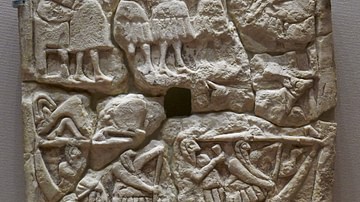
Image
Mesopotamian Banquet Scene
Perforated votive plaque with a banquet scene, Mesopotamia, modern-day Iraq, c. 2700-2600 BCE.
Louvre, Paris.
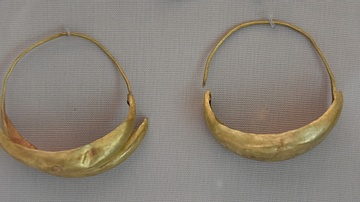
Image
Mesopotamian Gold Earrings
This is a pair of gold boat-shaped earrings, worn by one of Queen Puabi's attendants and was found inside Puabi's grave. Early Dynastic Period, circa 2600 BCE. From the Royal Cemetery at Ur, Southern Mesopotamia, modern-day Iraq. Part of...

Image
Detail, Illegally Excavated Mesopotamian Clay Tablet
This clay tablet was illegally excavated. The precise provenance of the excavation is unknown, but probably from Southern Mesopotamia, modern-day Iraq. It is currently housed in the Sulaymaniyah Museum, Iraqi Kurdistan.
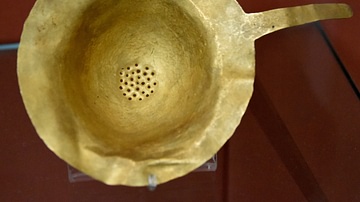
Image
Mesopotamian Gold Strainer
This gold strainer was roughly shaped and has a short handle. It was found at the bottom of the pit of Queen Puabi's grave. Beer and wine were drunk in Mesopotamia from at least the fourth millennium BCE and it is possible that the strainer...
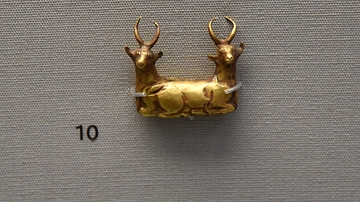
Image
Mesopotamian Antelope Amulet
The antelopes of this amulet were joined at their hindquarters. This gold jewellery was found (together with fish amulets) on Puabi's arm inside her grave. Early Dynastic Period, circa 2600 BCE. From the Royal Cemetery at Ur, Southern Mesopotamia...
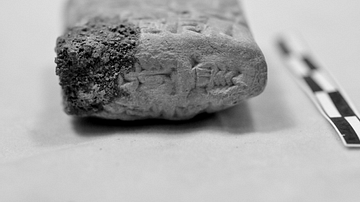
Image
End View, Illegally Excavated Mesopotamian Clay Tablet
This clay tablet was illegally excavated. The precise provenance of the excavation is unknown, but probably from Southern Mesopotamia, modern-day Iraq. It is currently housed in the Sulaymaniyah Museum, Iraqi Kurdistan.
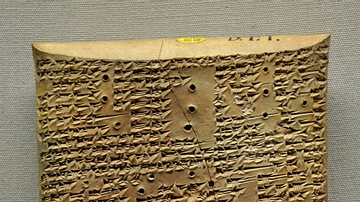
Image
Advice to a Mesopotamian Prince
The cuneiform inscription on this clay tablet claims various exemptions for the cities of Babylon, Nippur, and Sippar and warns rulers against disregarding them. This is a copy which was made about 700-650 BCE of an earlier composition. From...
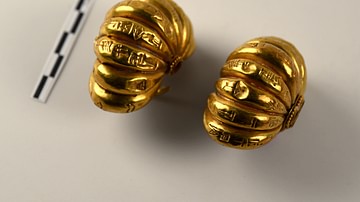
Image
Mesopotamian Gold Earrings, Ur III
Both earrings are placed in a mirror-image position, with the lower surfaces facing each other. Each earring is composed of nine lunar-shaped segments forming a flattened half- ball. The cuneiform signs run vertically from above downward...
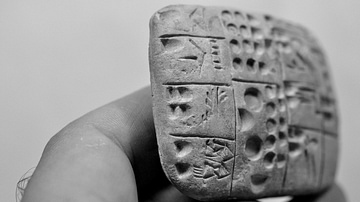
Image
Side View, Illegally Excavated Mesopotamian Clay Tablet
This clay tablet was illegally excavated. The precise provenance of the excavation is unknown, but probably from Southern Mesopotamia, modern-day Iraq. It is currently housed in the Sulaymaniyah Museum, Iraqi Kurdistan.
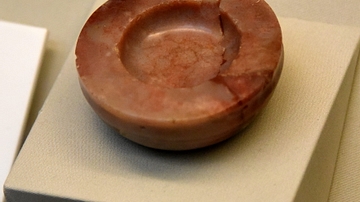
Image
Mesopotamian Cosmetic Bowl
This luxurious marble cosmetic container has an inscriptions marking it as the property of Marduk, god of Babylon. From Sippar, Southern Mesopotamia, Iraq. Circa 625-550 BCE. (The British Museum, London)